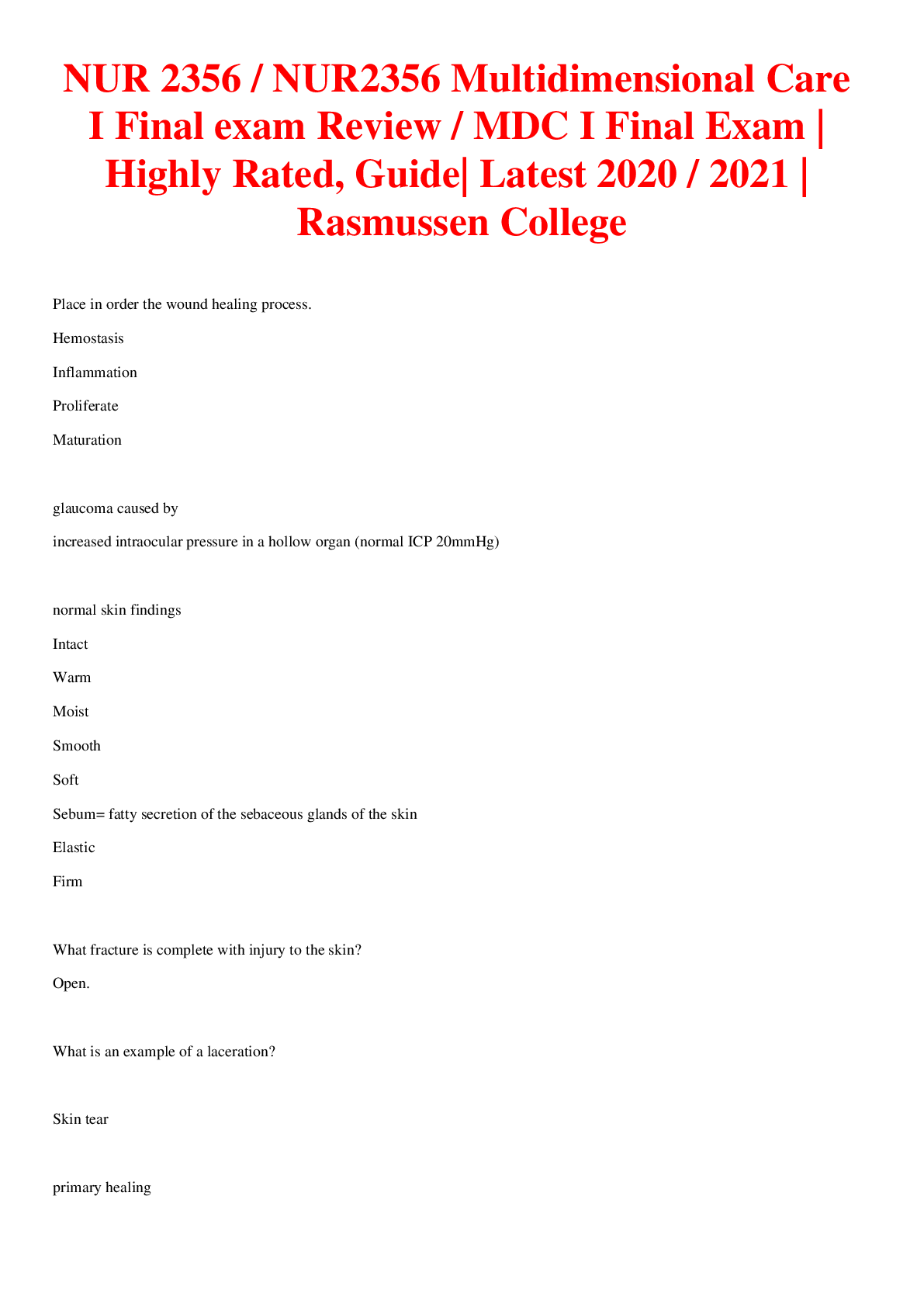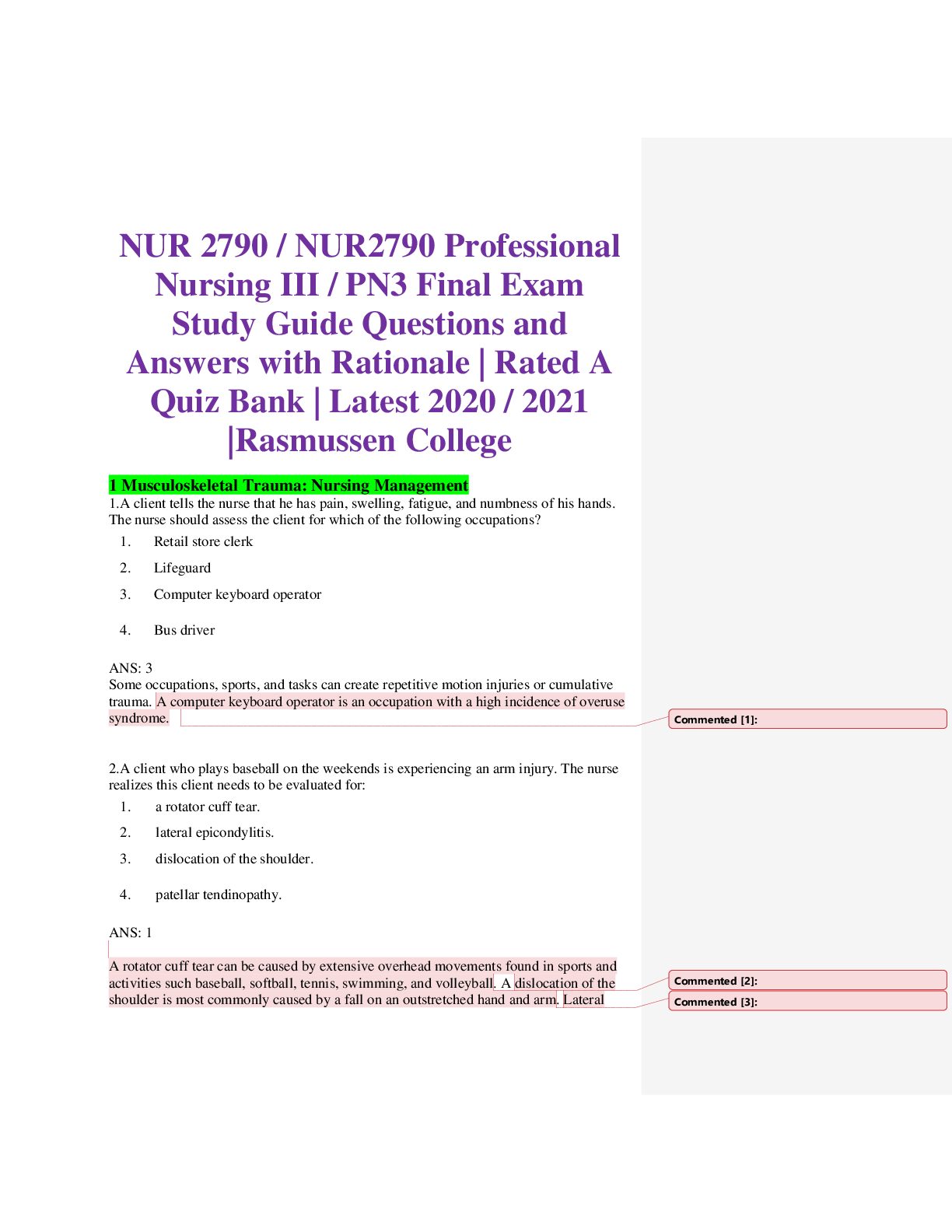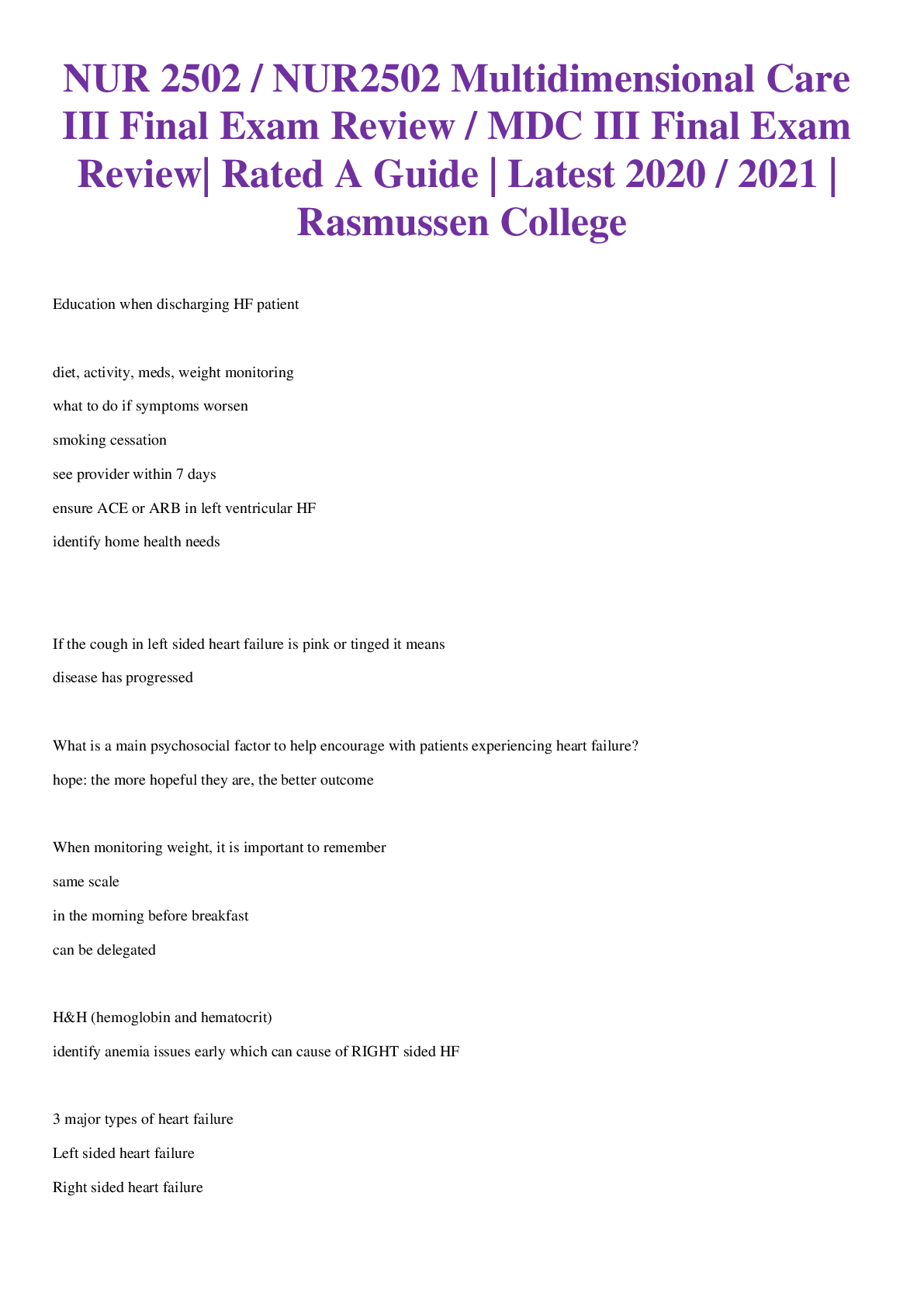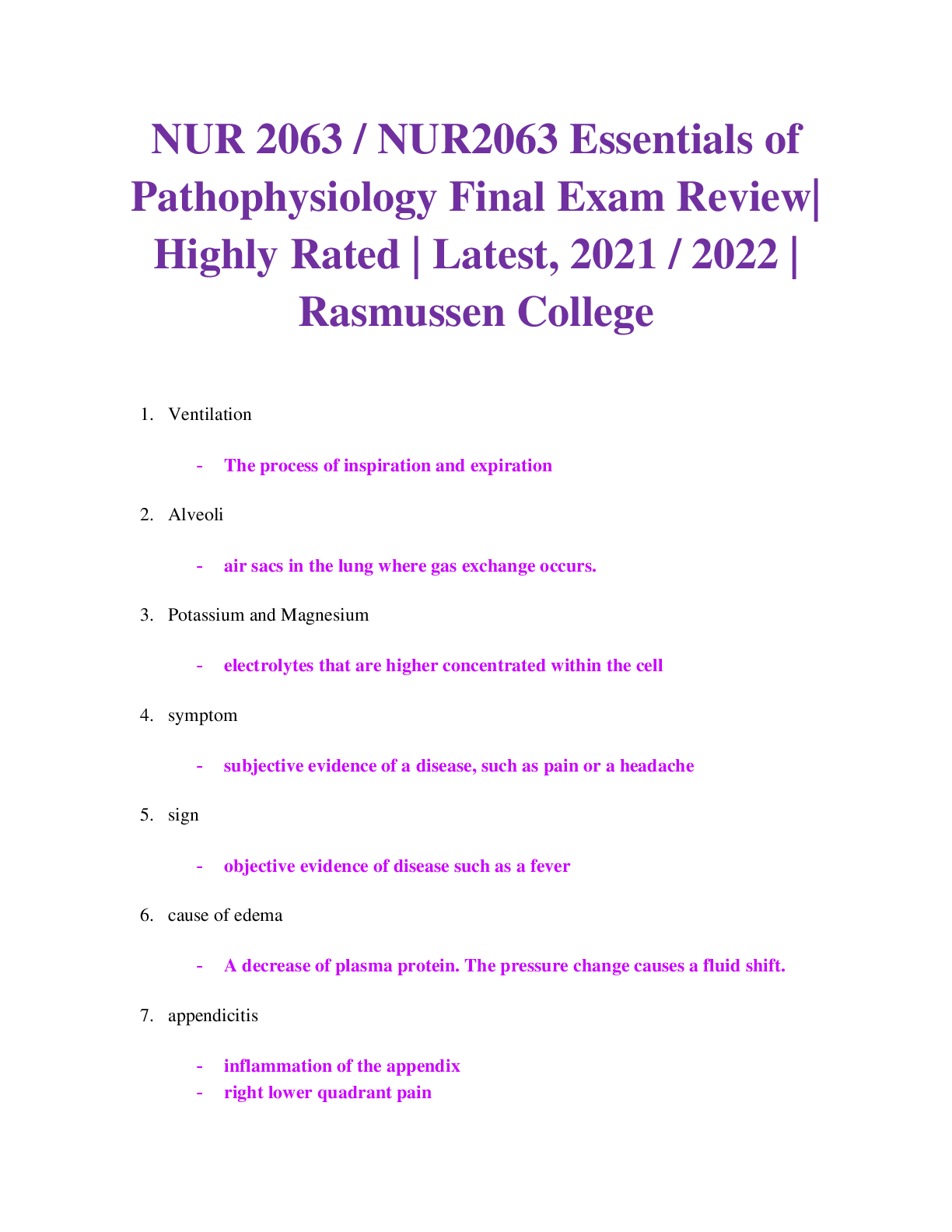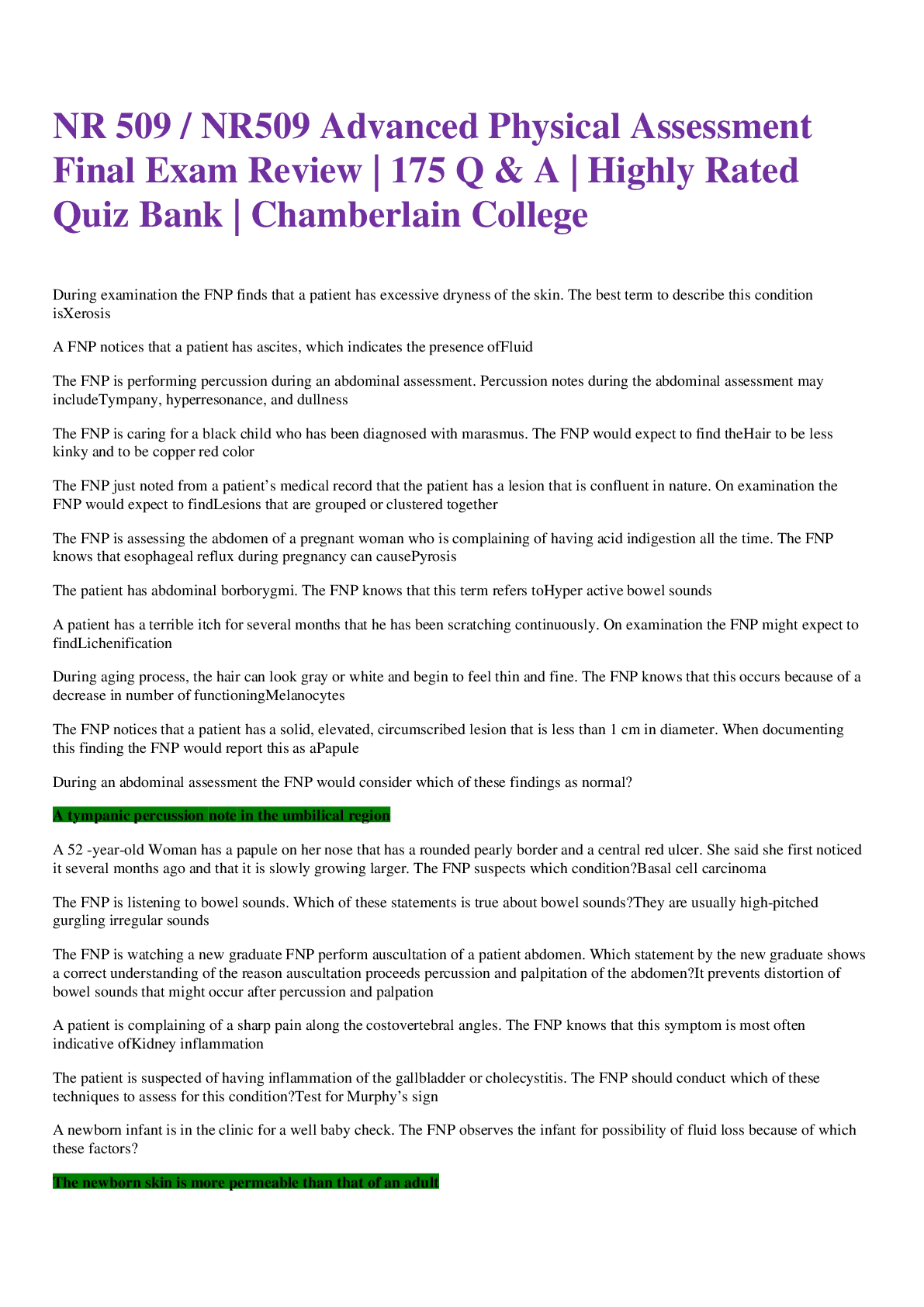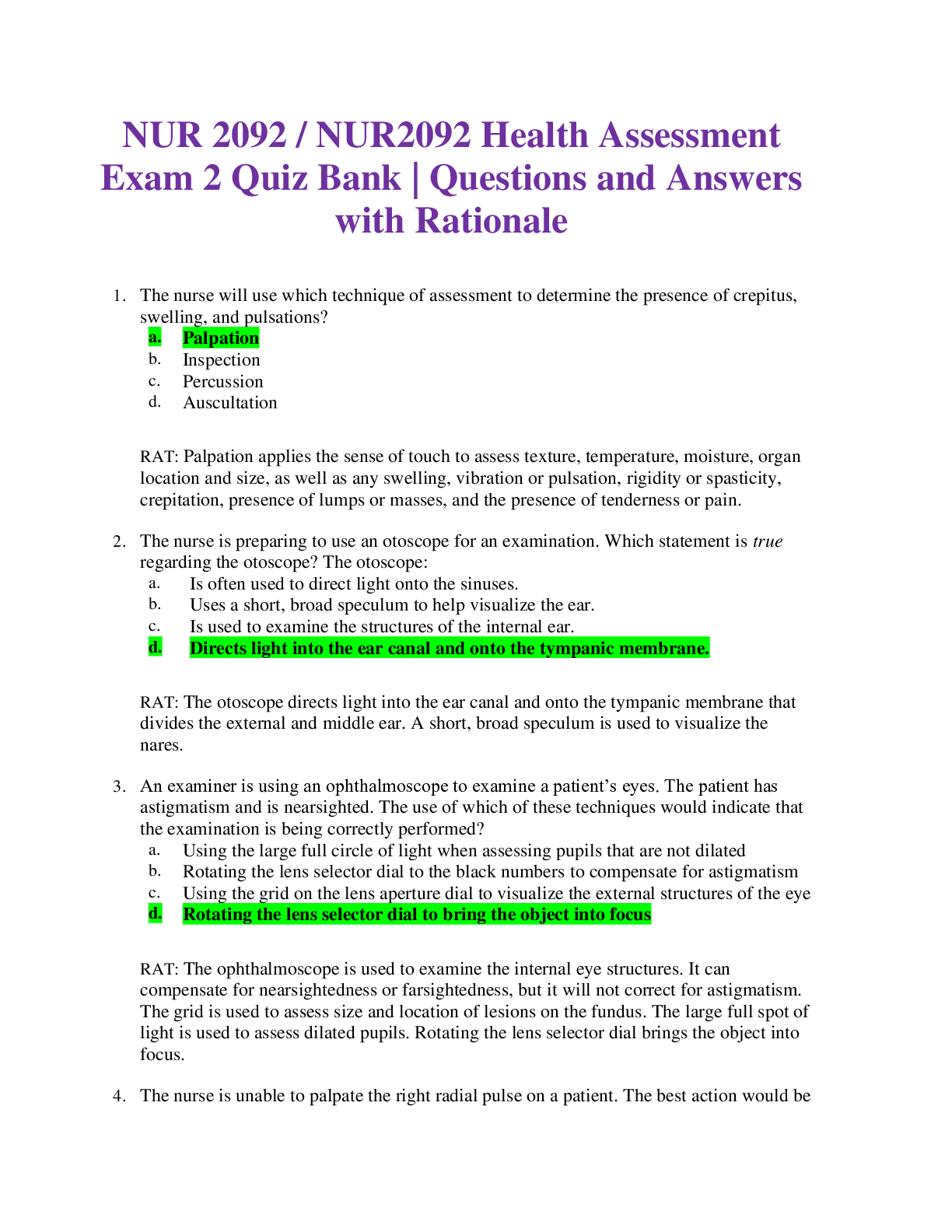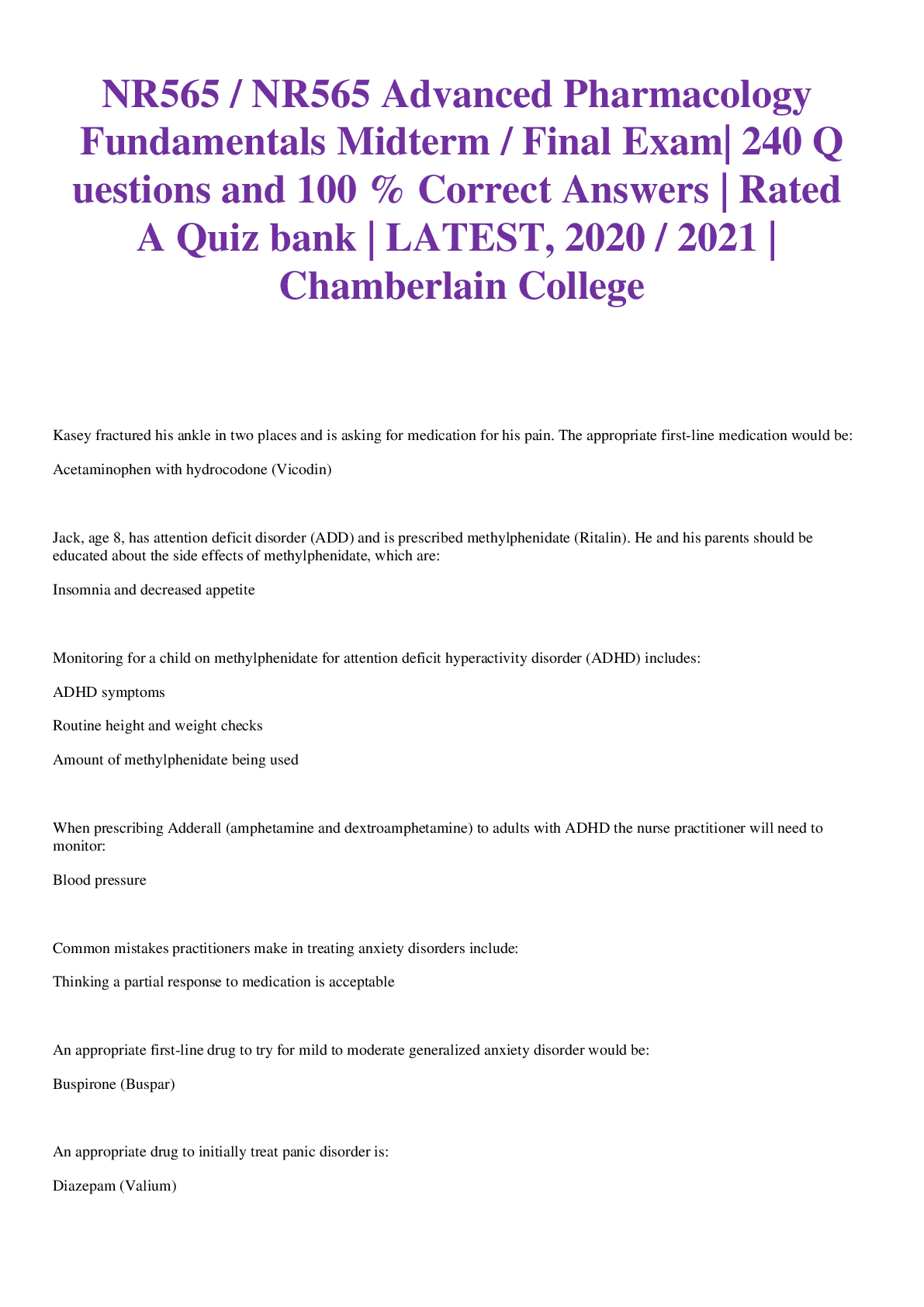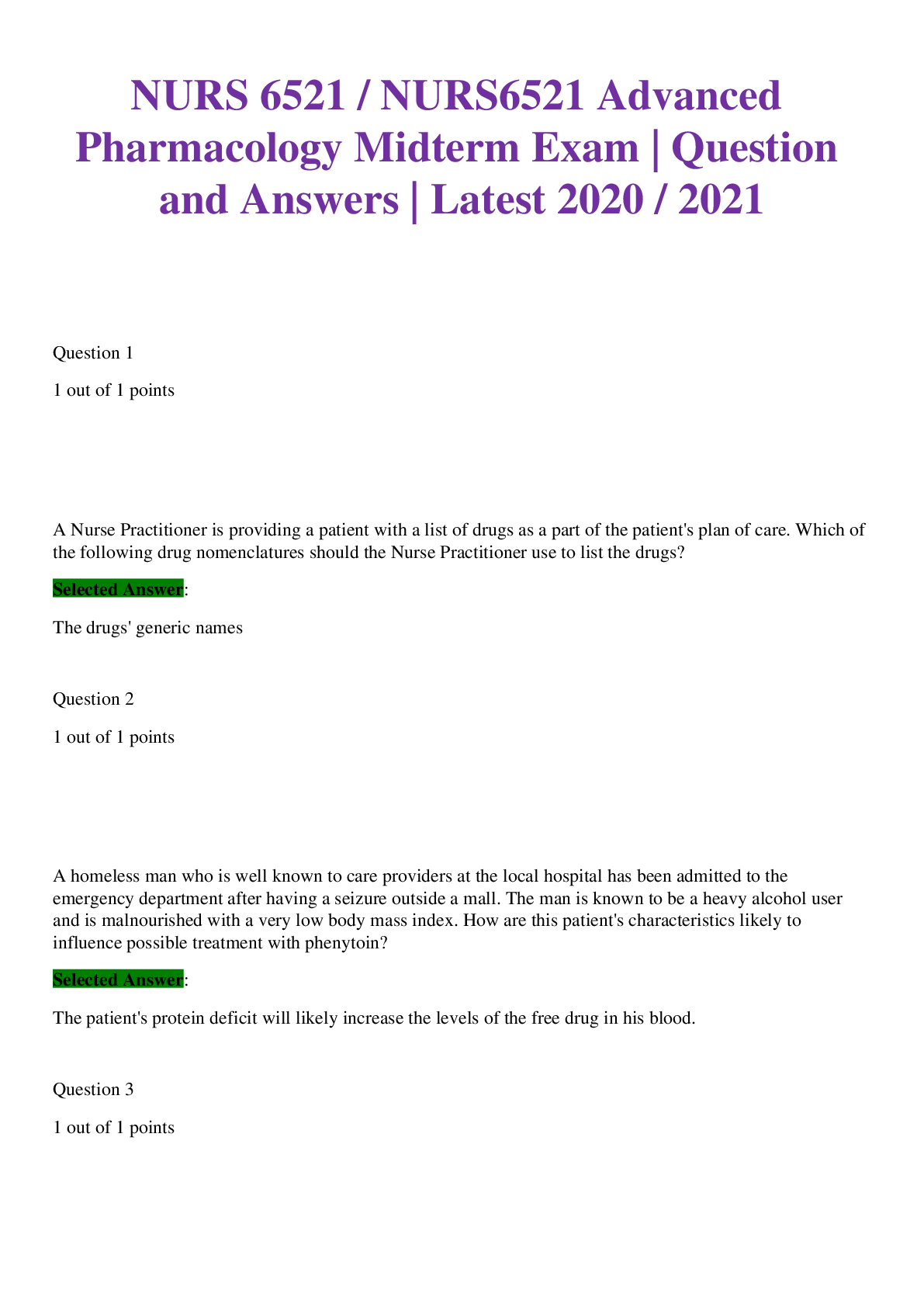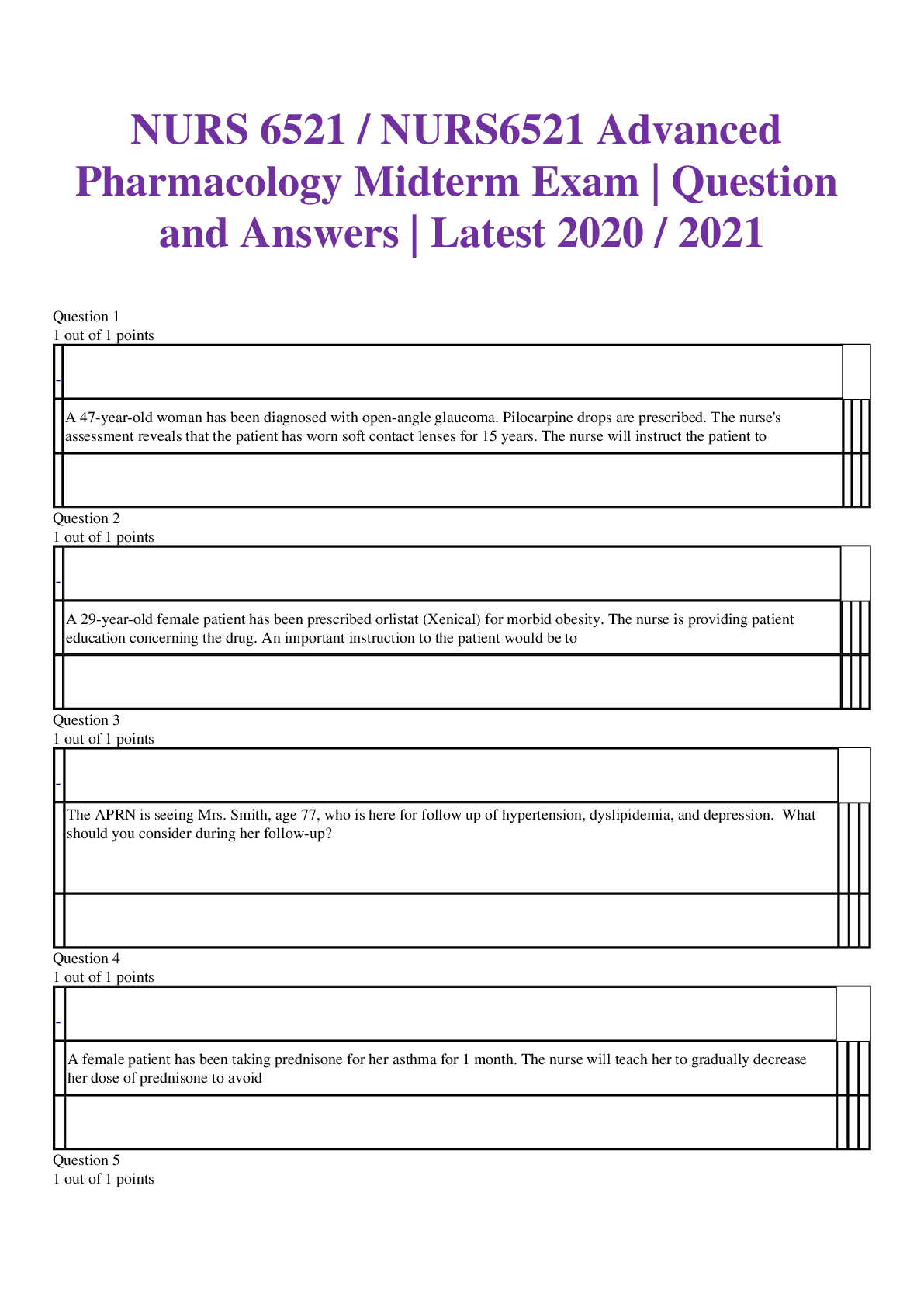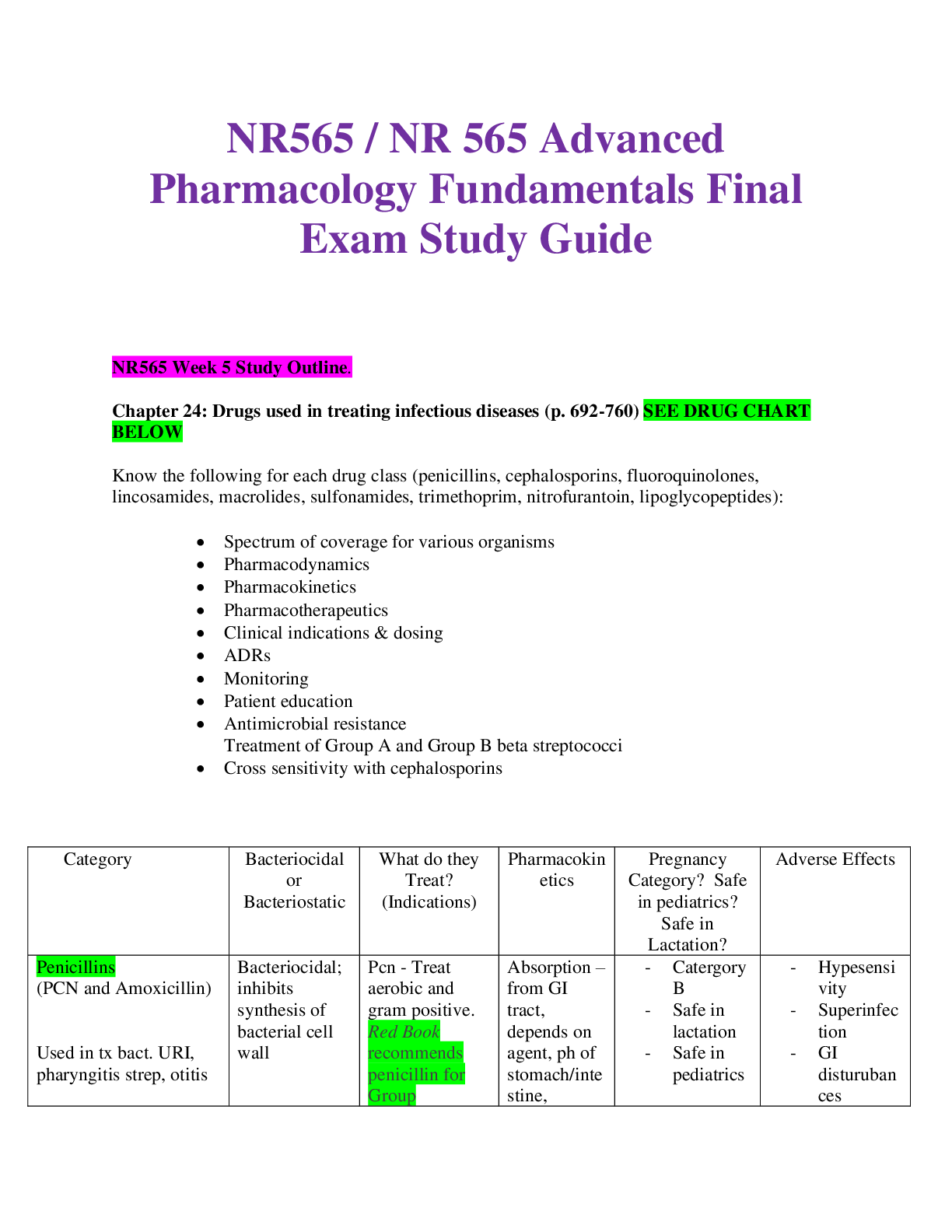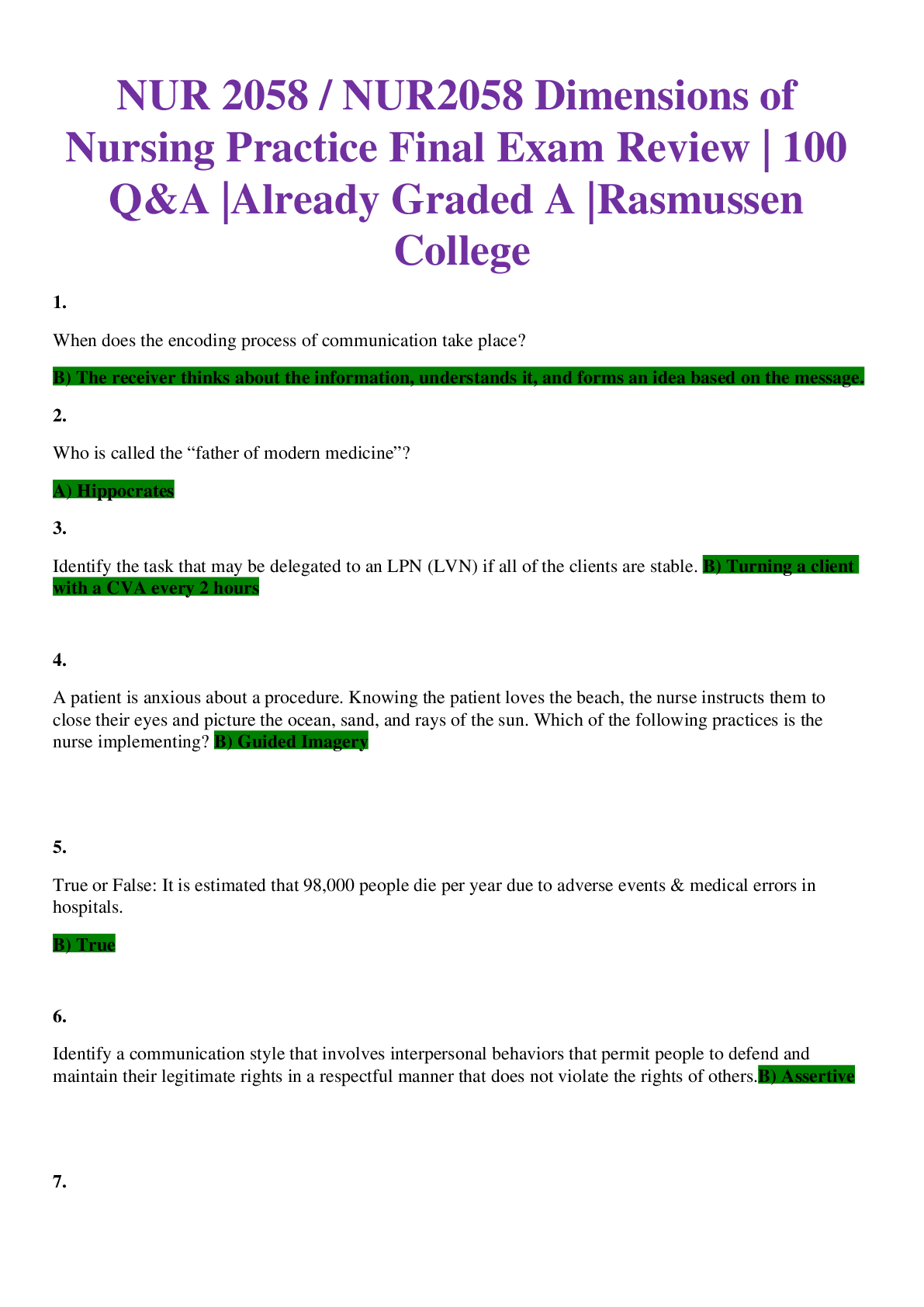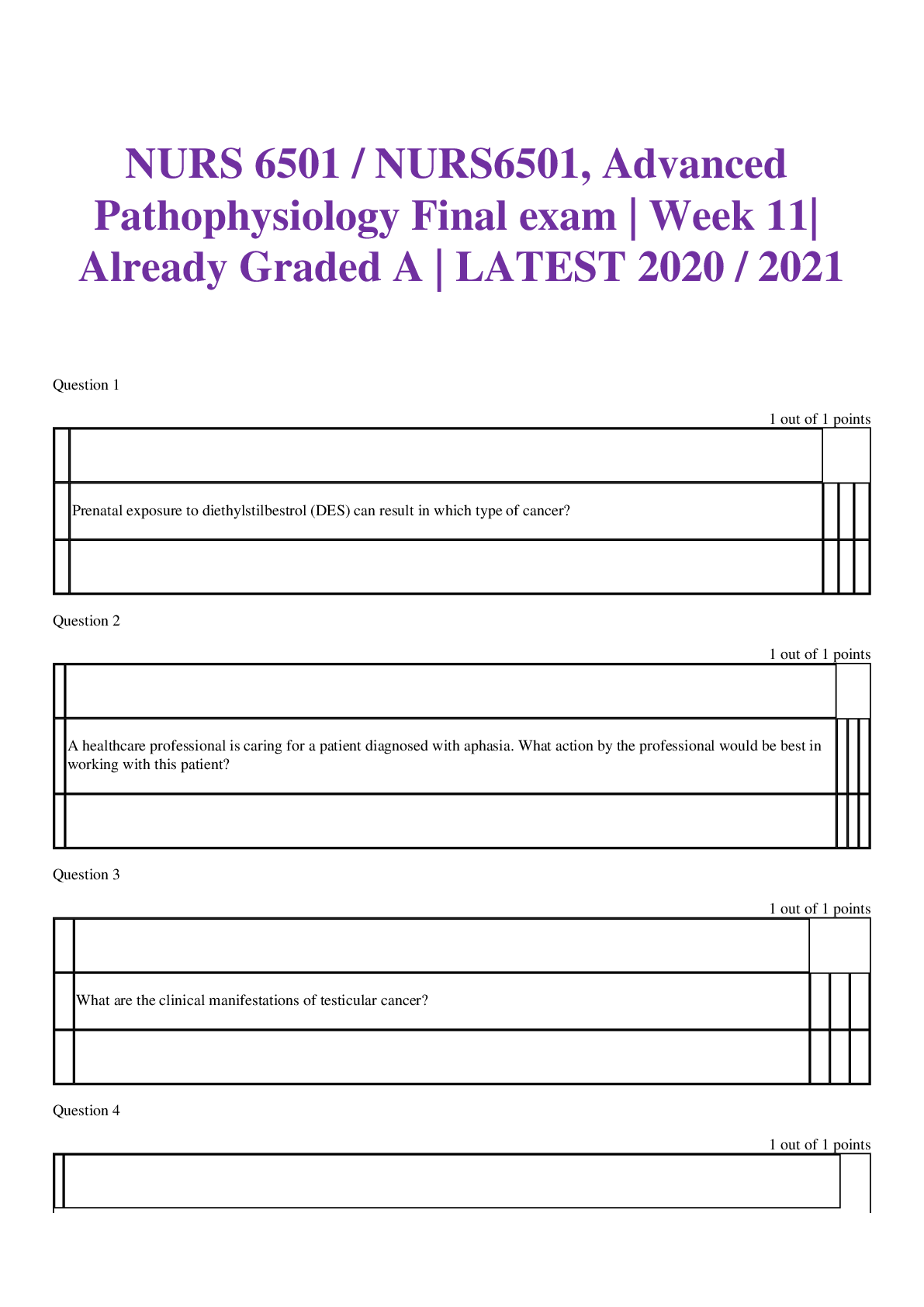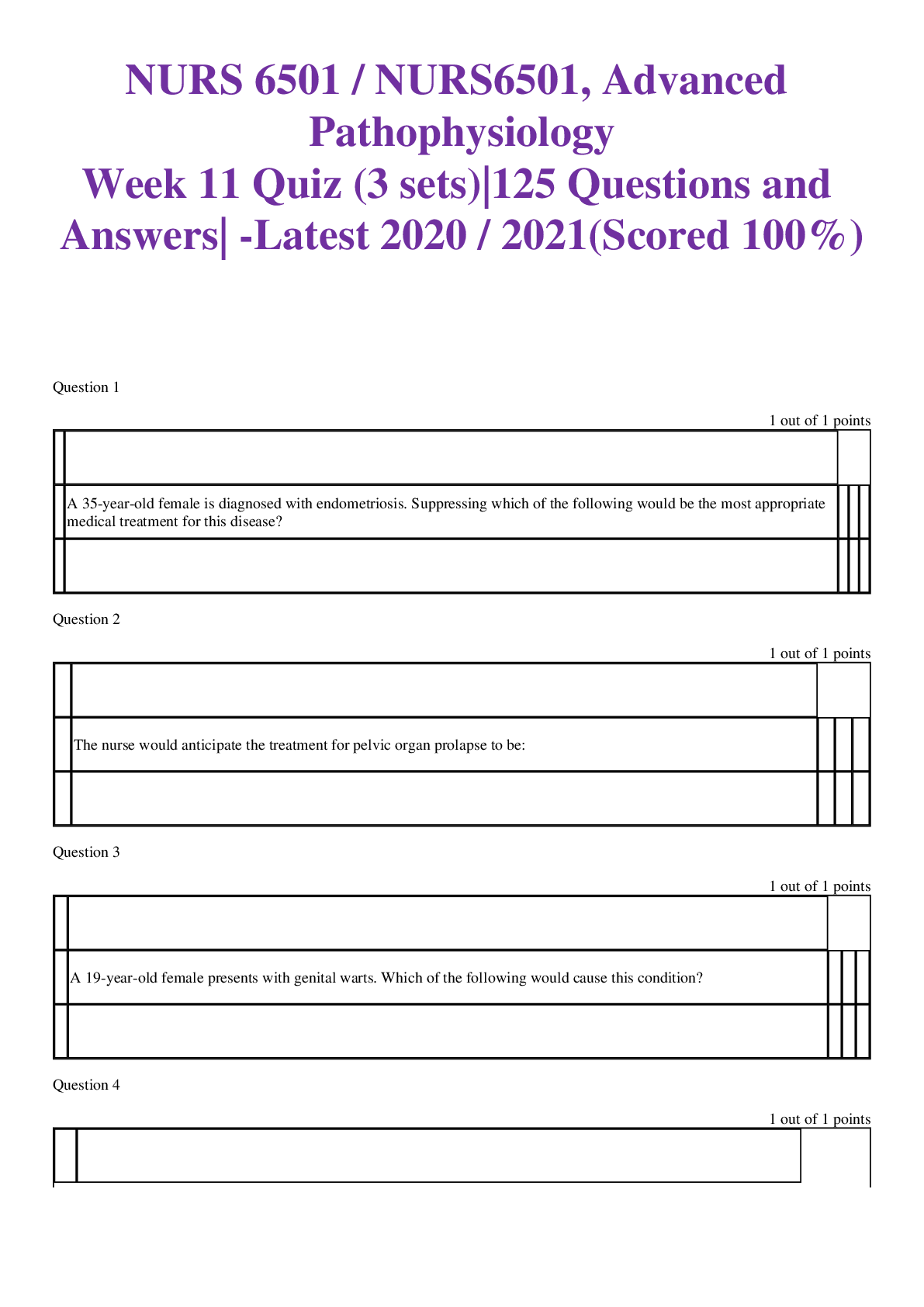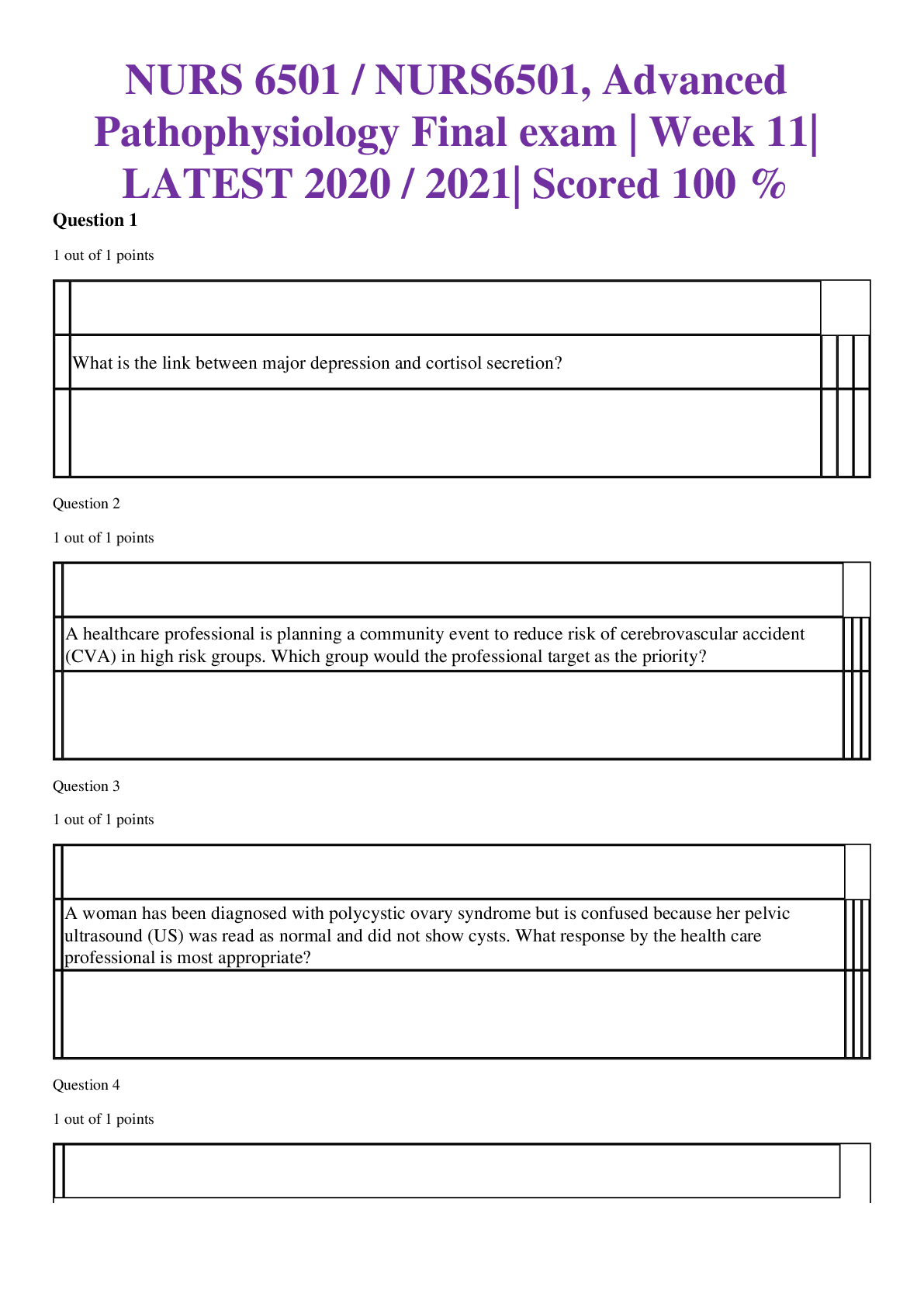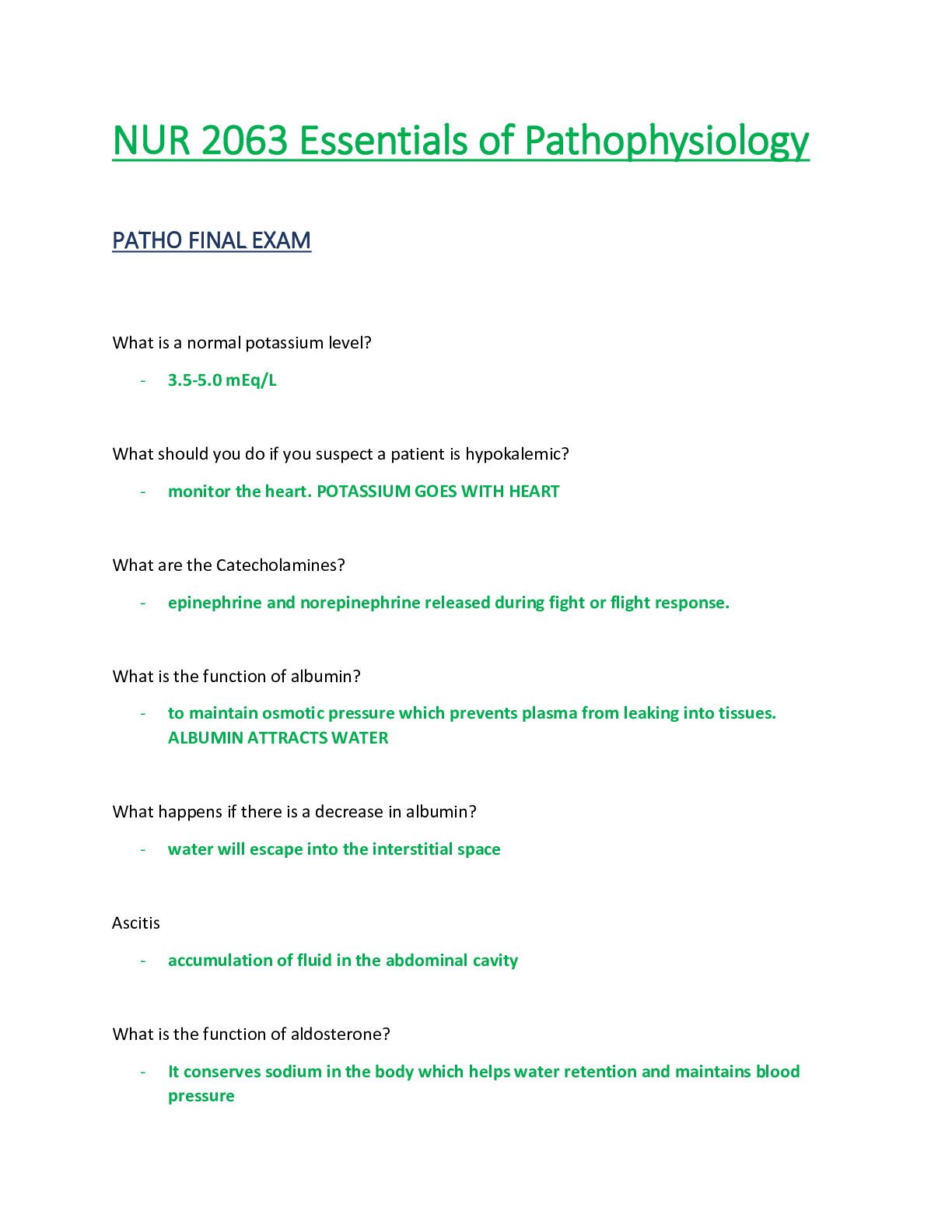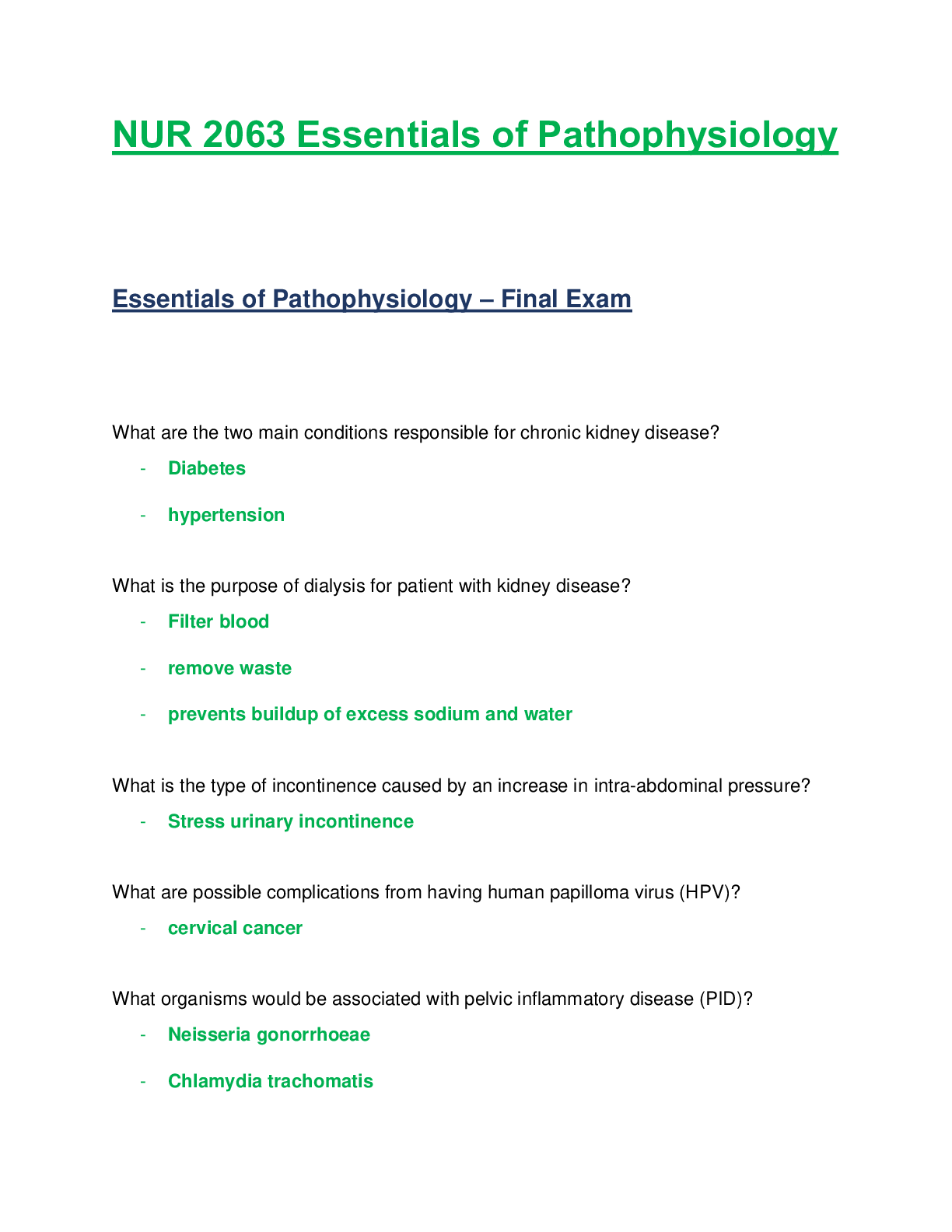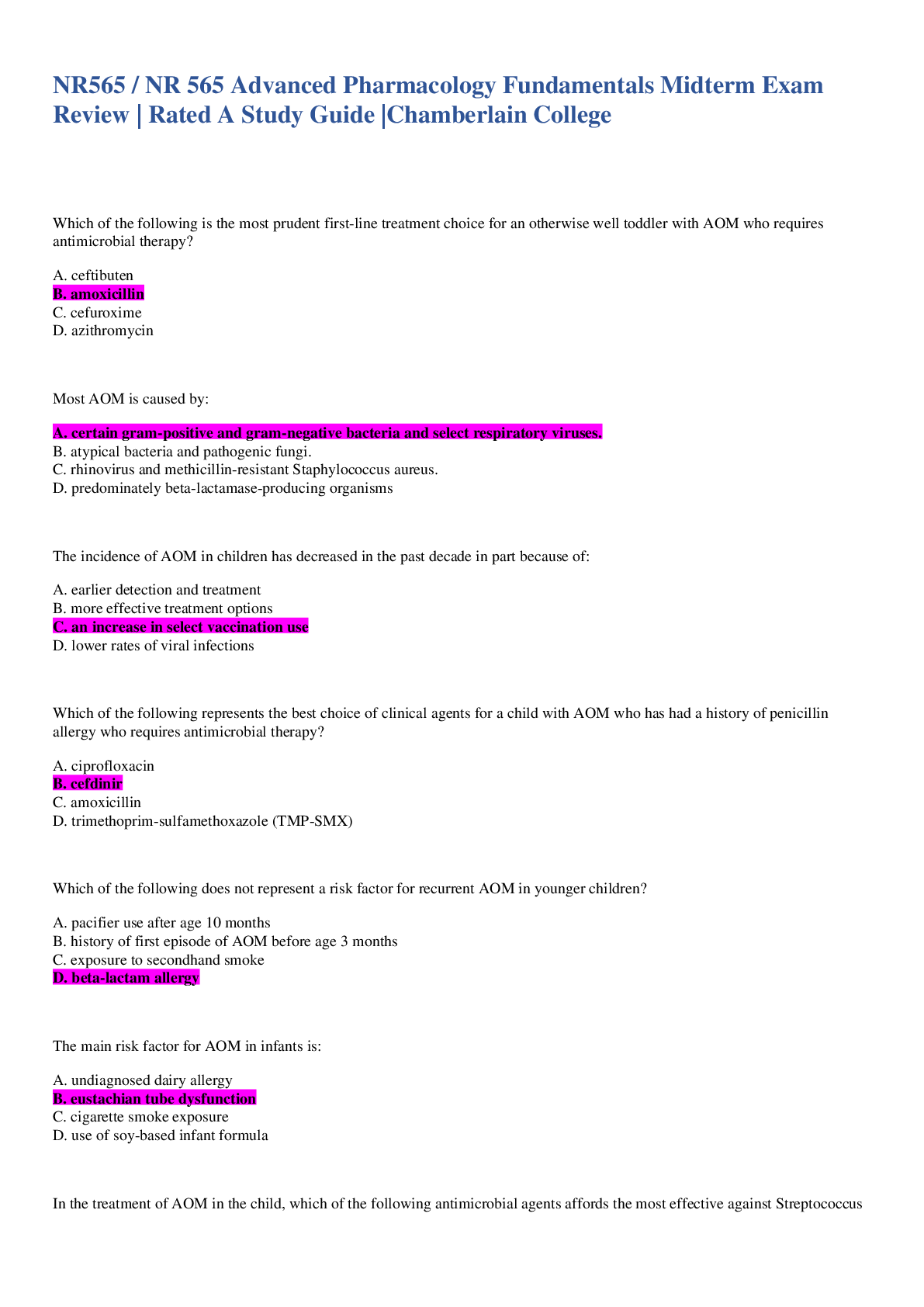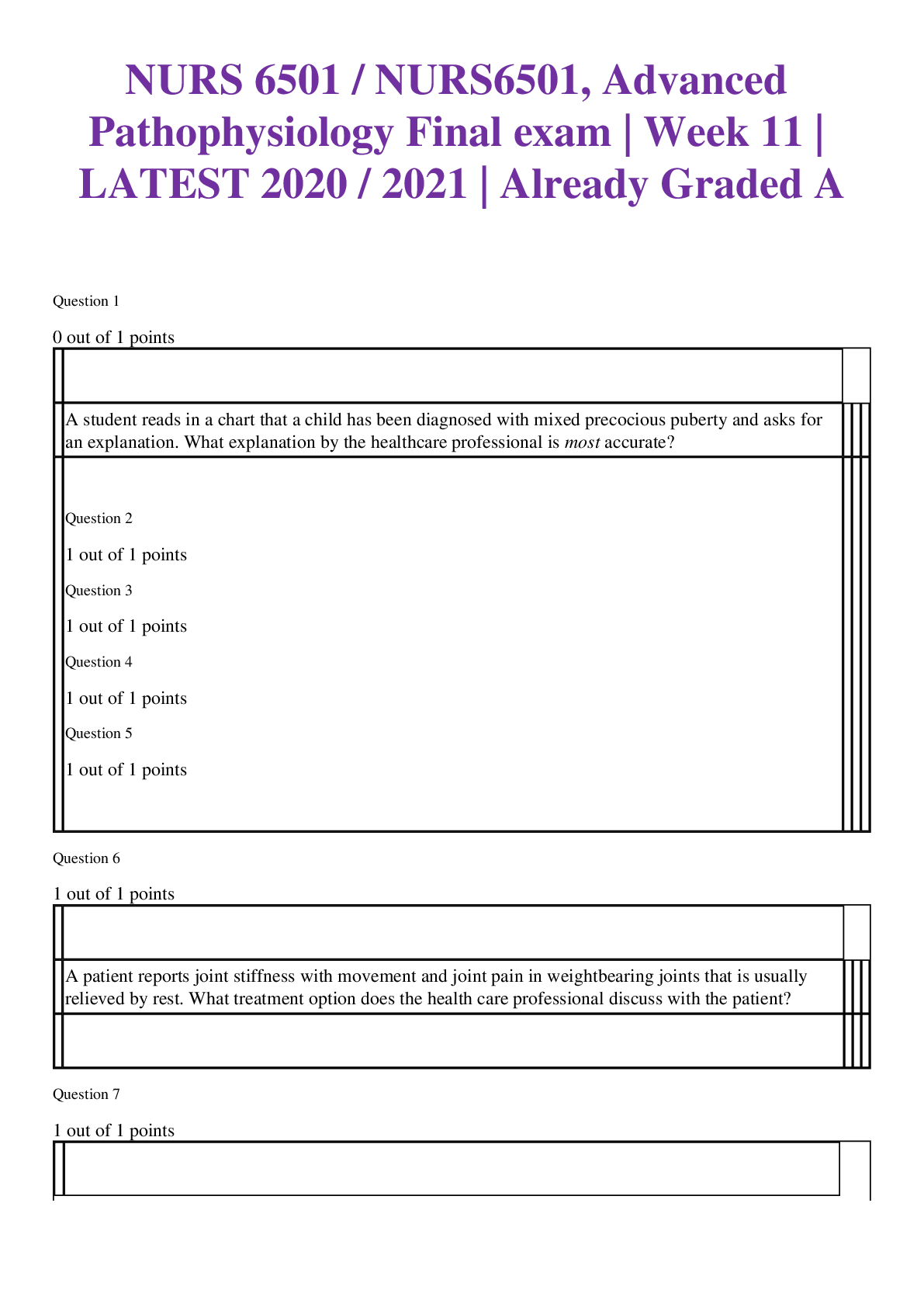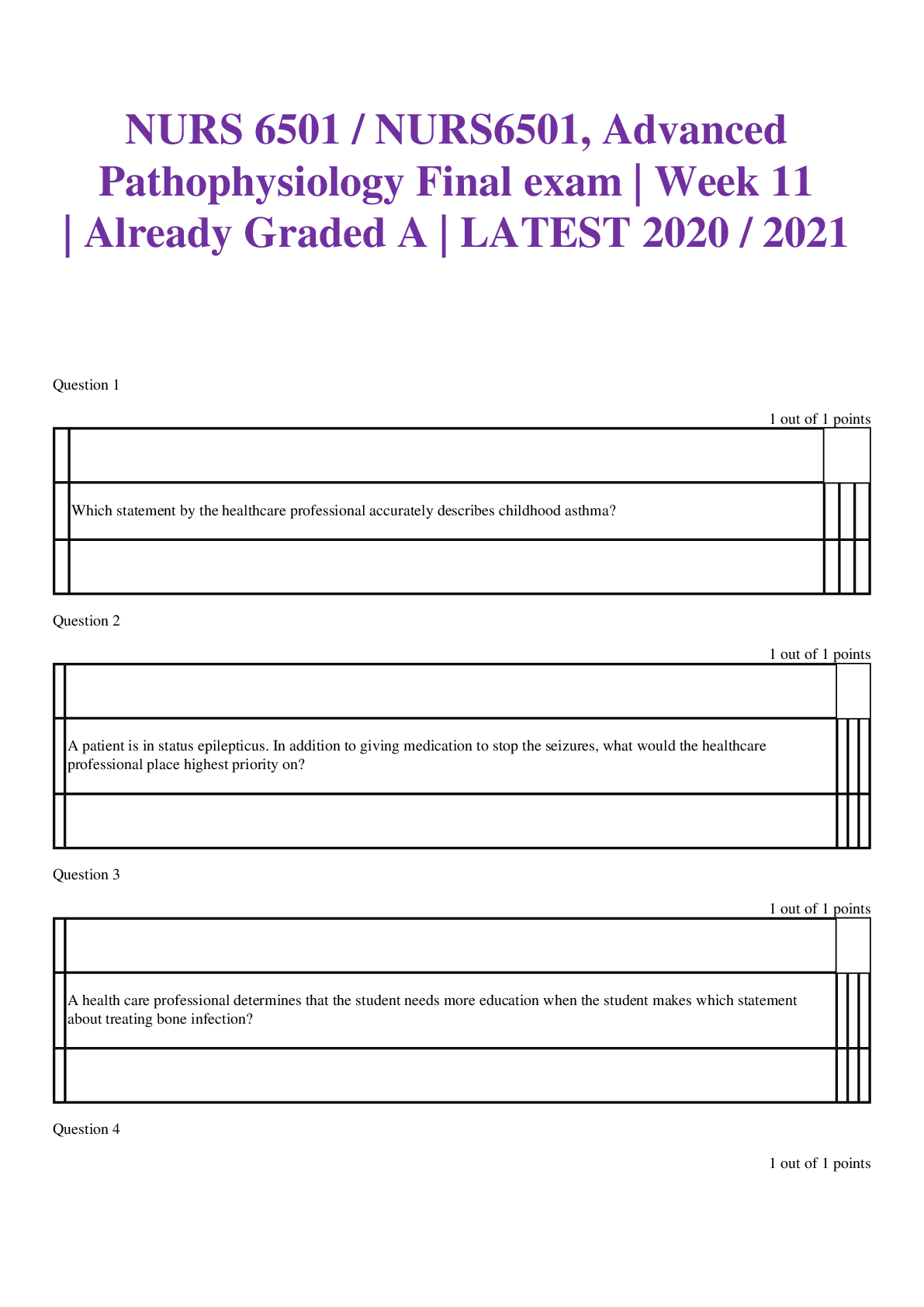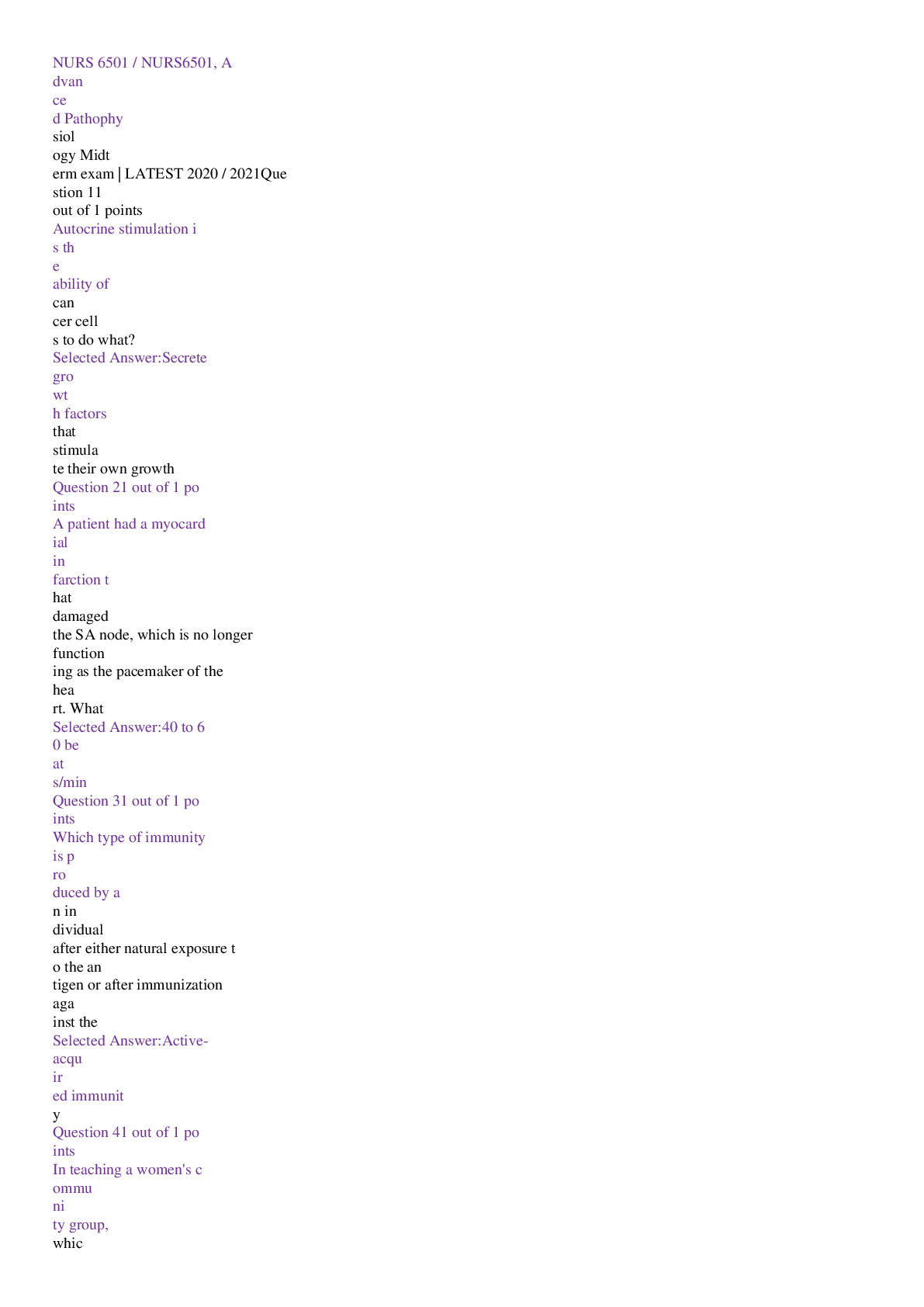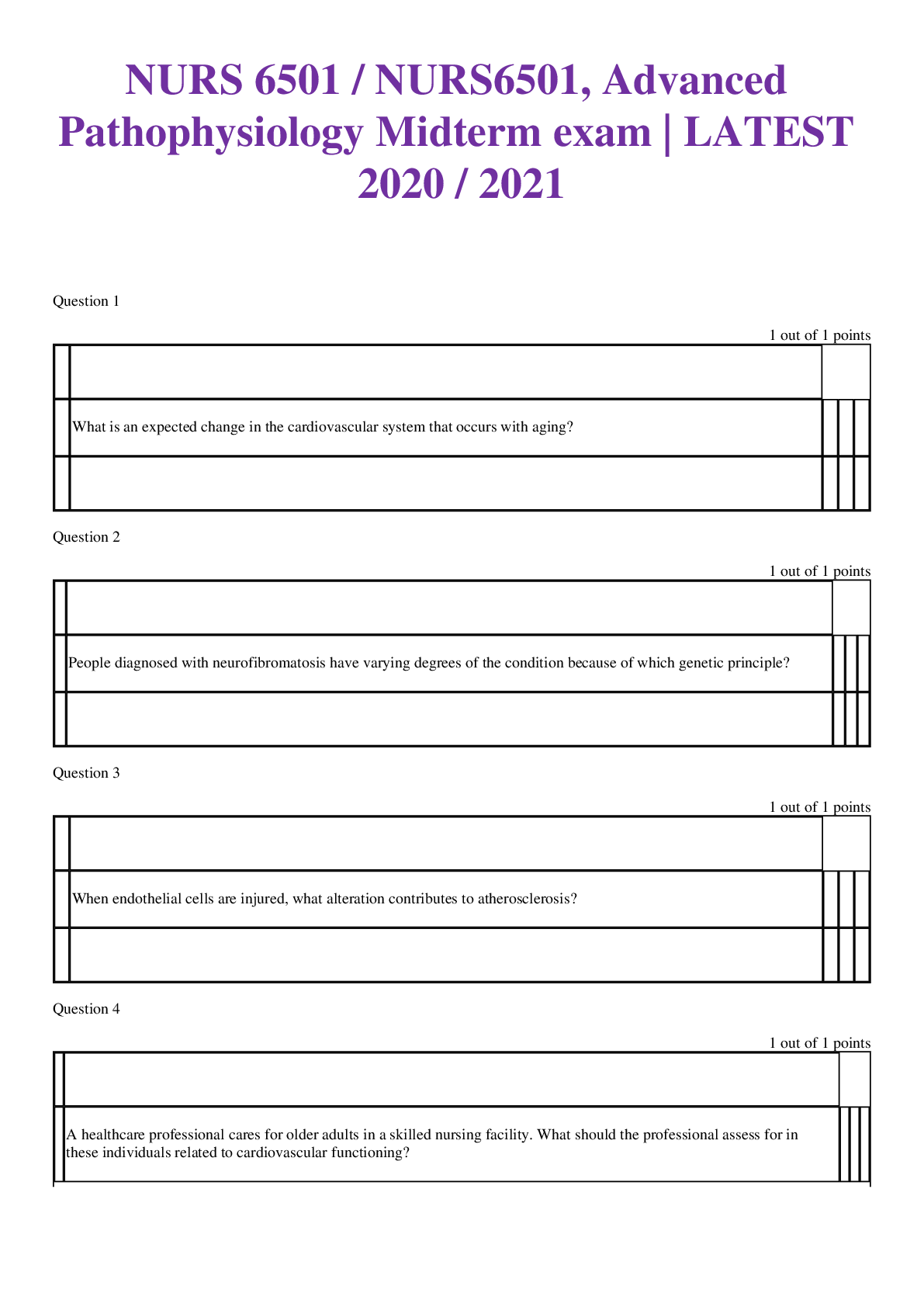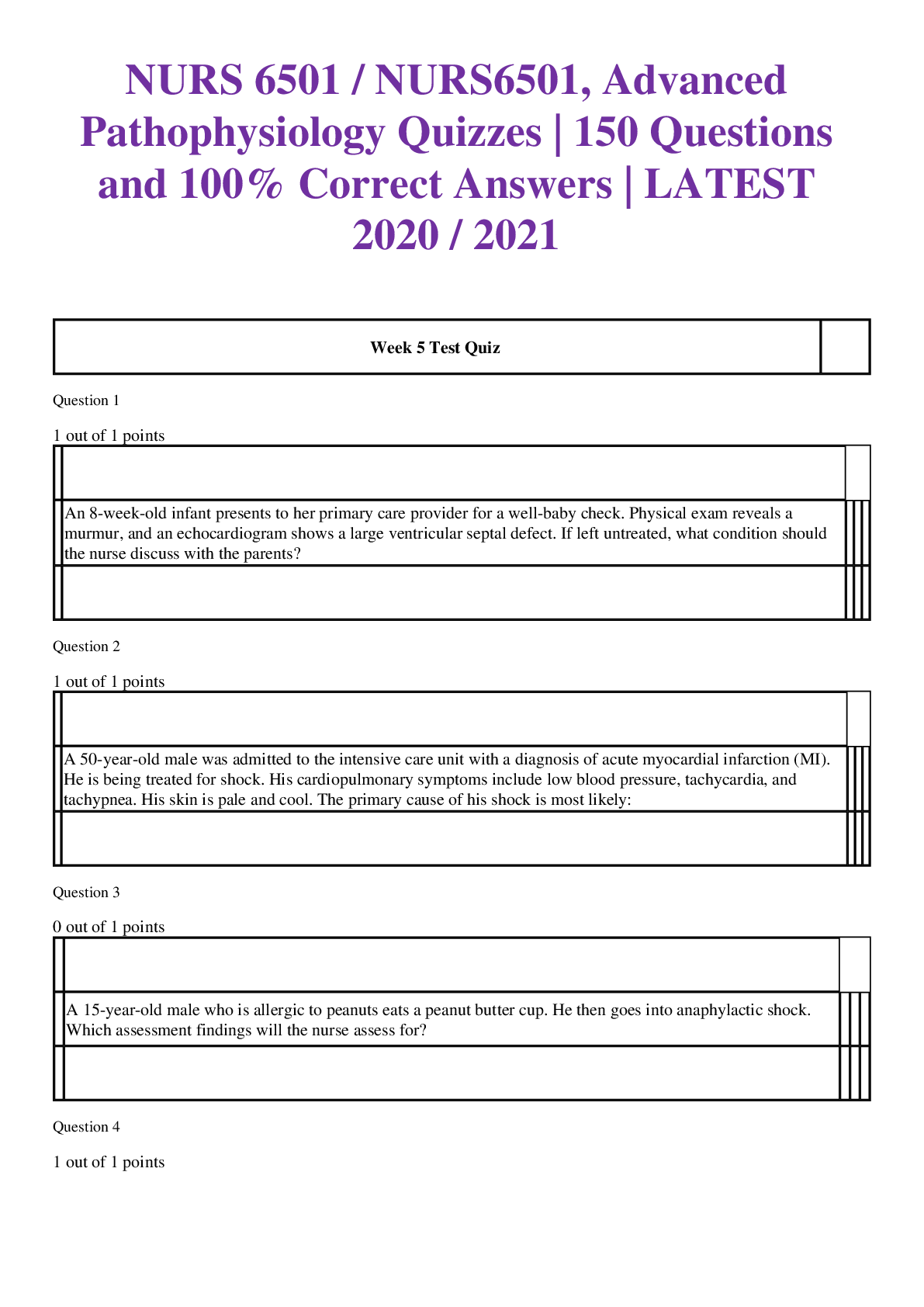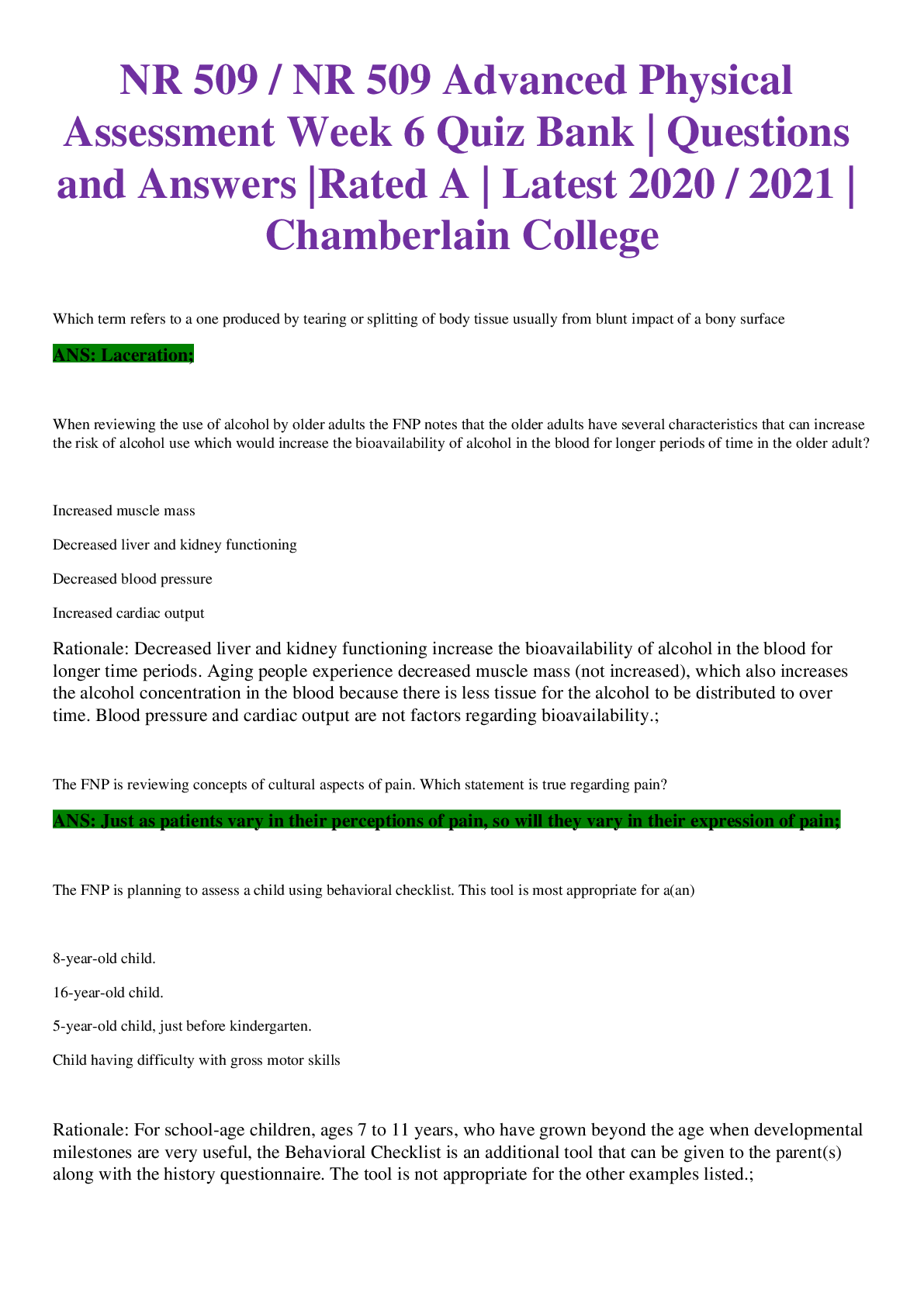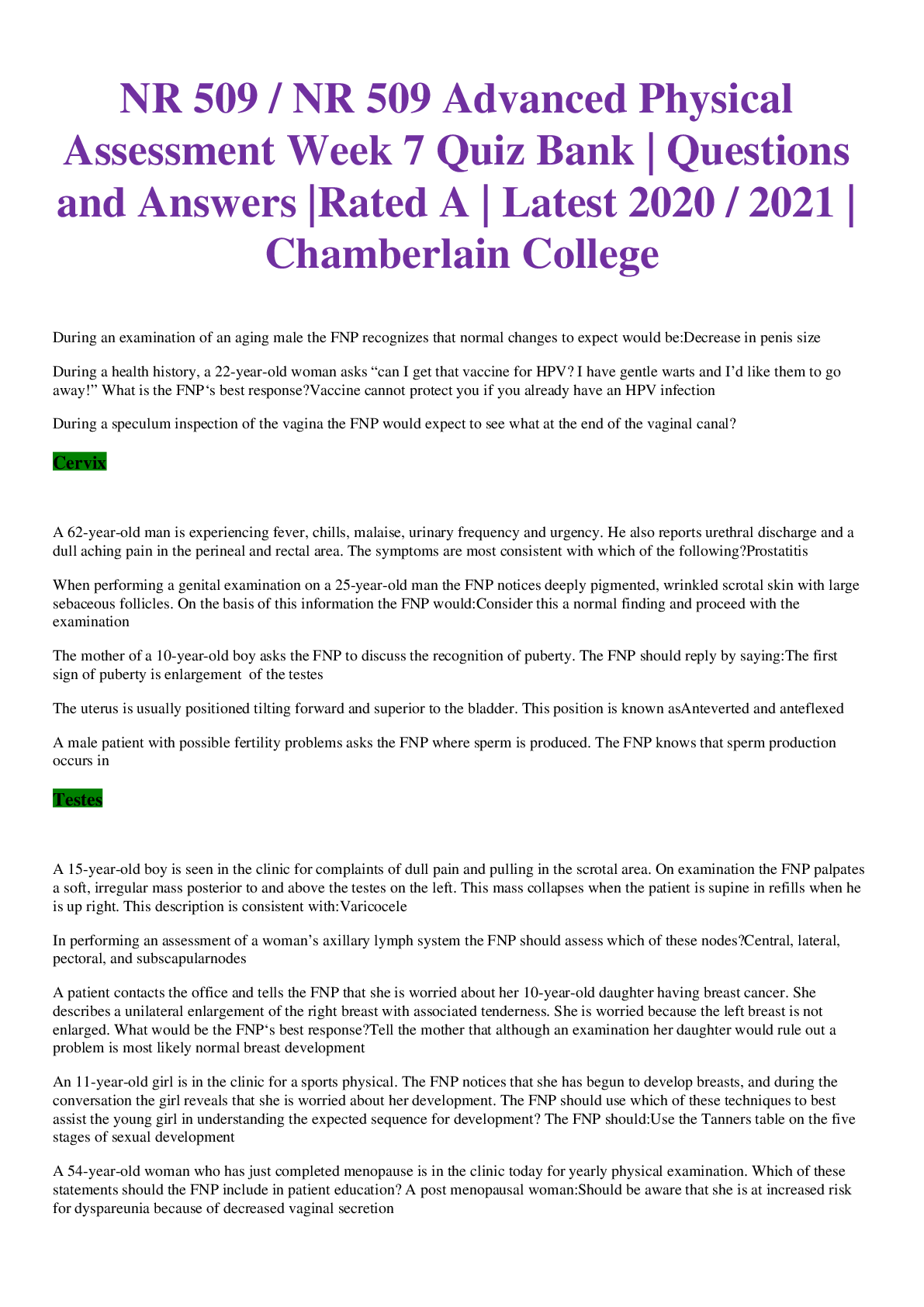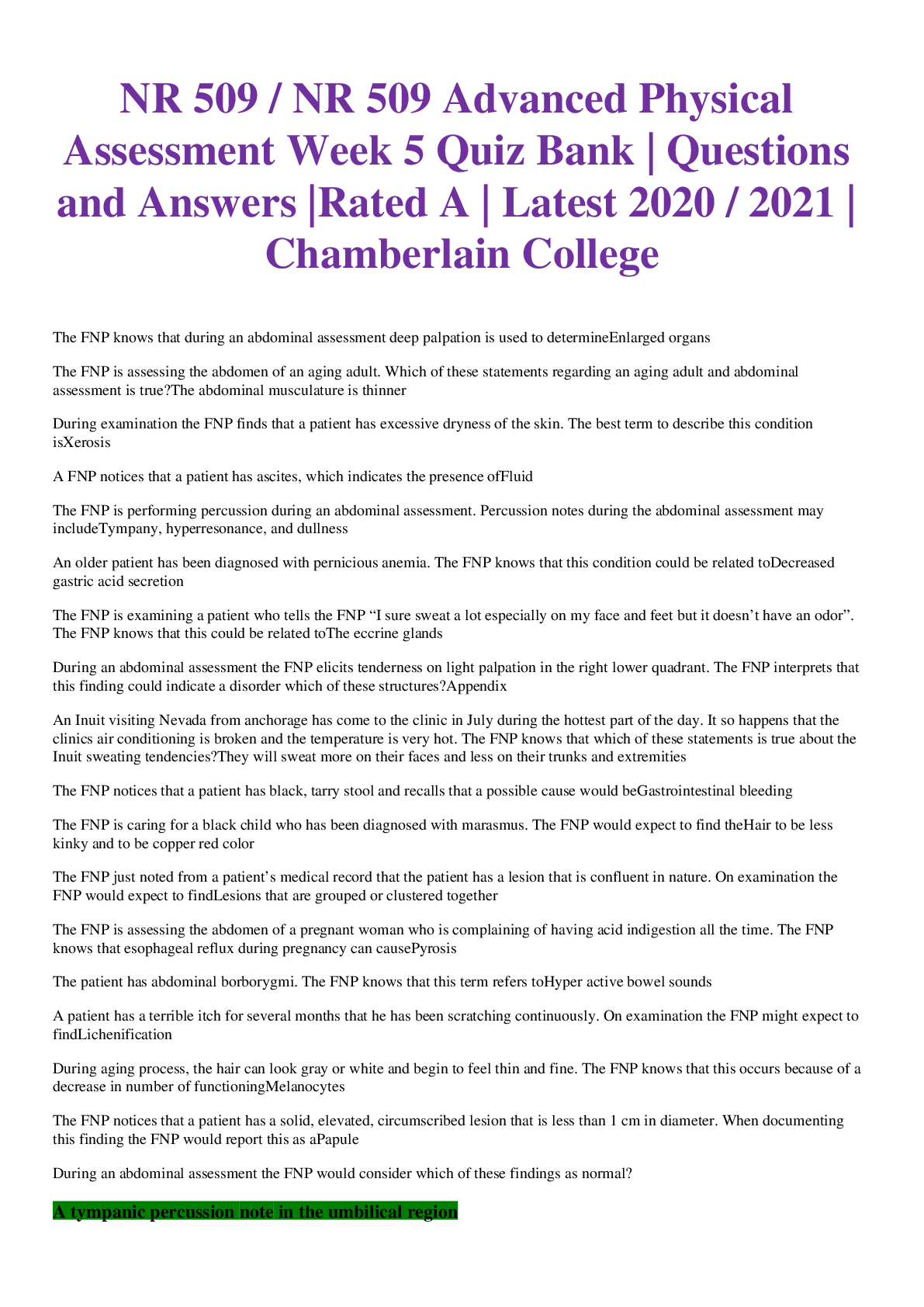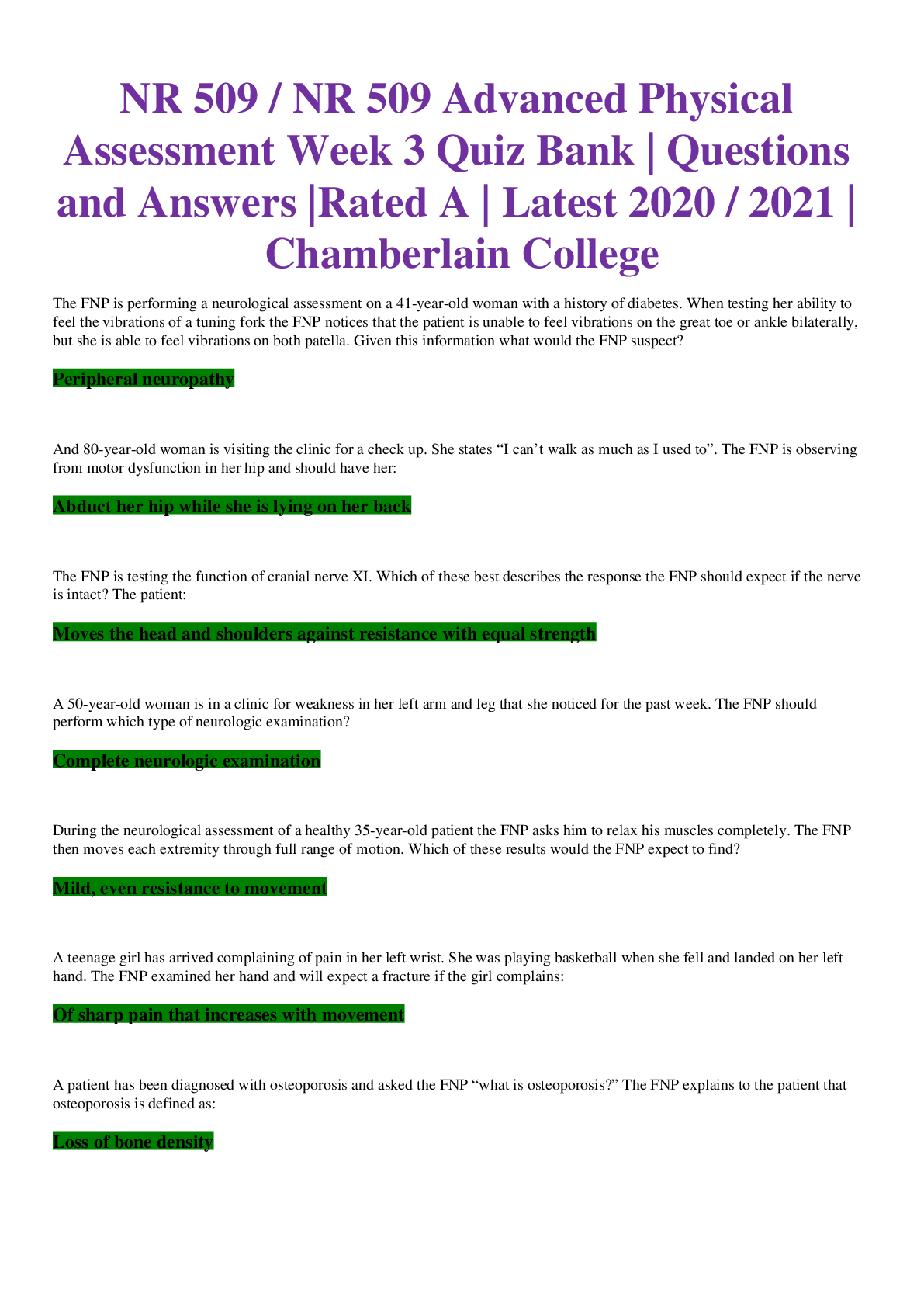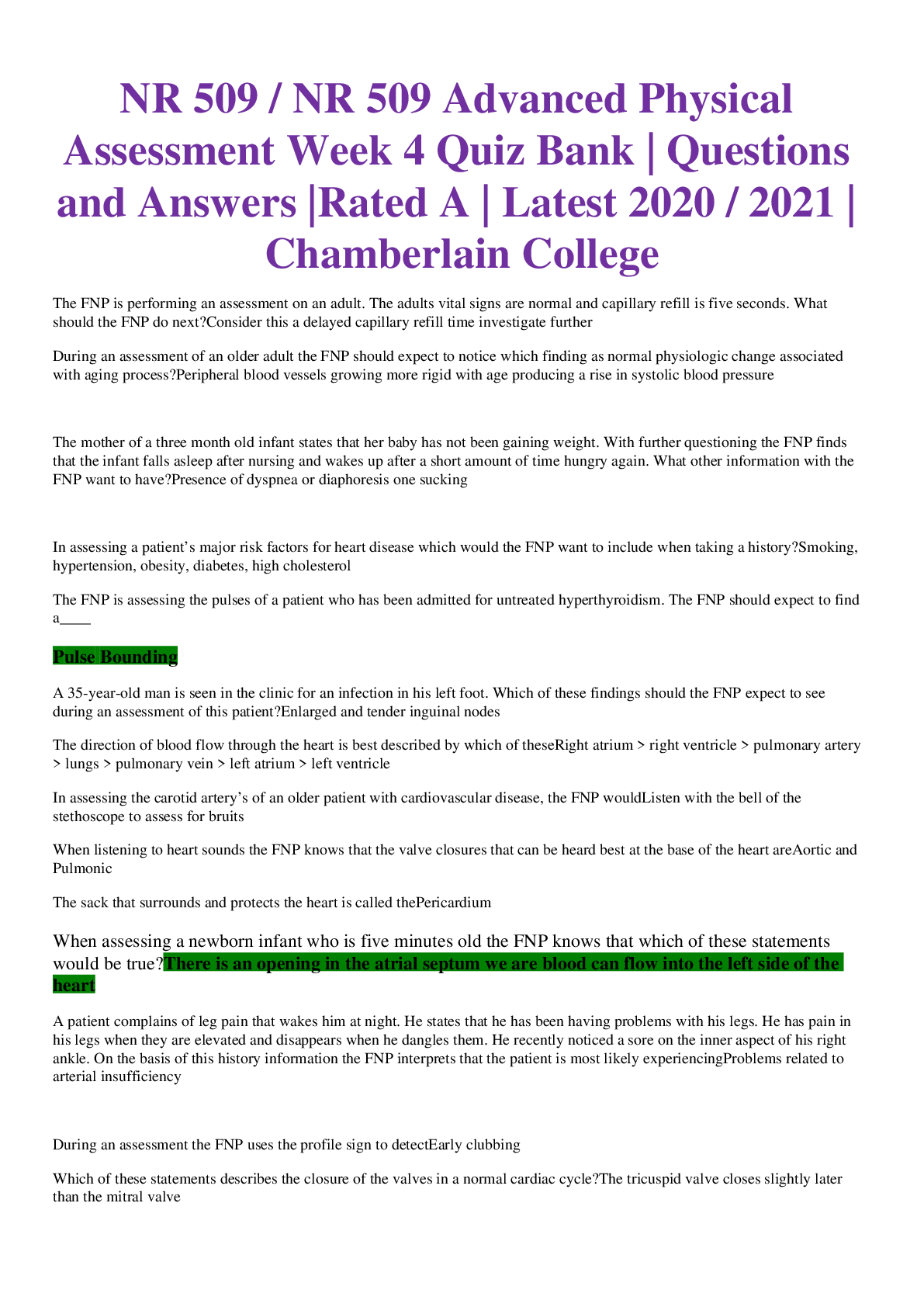*NURSING > EXAM > NR 507 / NR507 Advanced Pathophysiology Final Exam Review | Rated A Guide | Latest 2020 / 2021 | Cha (All)
NR 507 / NR507 Advanced Pathophysiology Final Exam Review | Rated A Guide | Latest 2020 / 2021 | Chamberlain College
Document Content and Description Below
NR 507 / NR507 Advanced Pathophysiology Final Exam Review | Rated A Guide | Latest 2020 / 2021 | Chamberlain College 1. There is an environmental-genetic interaction responsible for type________d... iabetes, what are the risk factors? - Type II, age, weight, lifestyle, activity, and family history.. 2. Metabolic syndrome is what? - Combination of central obesity, dyslipidemia, prehypertension, and elevated FBS. 3. Polycystic ovarian syndrome also plays a role in developing______________ - diabetes, and insulin resistance 4. A group of insulin-sensitizing drugs, call the thiazolidinediones that modulate PPARy activity have been used in the treatment of_____________ - Type II diabetes 5. Glucagon is a hormone produced by______________ of the_____________and acts primarily in the ______________to increase blood glucose levels by stimulating glycogenolysis and glucogenesis. - Alpha cells, pancreas, liver 6. Glucagon acts as an____________to insulin. - Antagonist 7. Another Beta-cell hormone is what? - Amylin 8. Amylin is _____________in both typeI and type II DM. - decreased. 9. What is the function of Amylin? - Increases satiety, and suppresses glucagon release from the alpha cells. it also contributes to islet cell destruction through the deposition of abnormal amyloid polypeptide in the pancreas. 10. DKA results when there is an absolute or relative deficiency of________________and an increase in the levels of insulin counterregulatory________________. - Insulin, hormones 11. What are the insulin counter regulatory hormones? - catecholamines, cortisol, glucagon, and GH. 12. Most common causes of DKA? - infection, trauma, surgery, or MI 13. Glycation? - normal non-enzymatic process that involves the reversible attachement of glucose to proteins, lipids, and nucleic acids without the action of enzymes. 14. diabetic retinopathy is the leading cause of what? - Blindness in adults older than 60 with DM. 15. Cushing syndrome is caused by excess_______________ - Cortisol, 16. Cushing is the overproduction of pituitary _______________ - ACTH by a pituitary adenoma 17. Those with Cushings do not increase ________and________secretion in response to a stressor. - ACTH, and cortisol 18. _________ and __________ is increased in ACTH-dependent hypercortisolism. - ACTH, and cortisol 19. Protein wasting is caused by the catabolic effects of cortisol on peripheral tissues. Muscle wasting leads to muscle weakness and is especially obvious in the muscles of the extremities with thinning of the limbs. - Cushing Syndrome 20. What labs are done for diagnosis of cushings? - Urinary free cortisol concentration , ACTH, cortisol. Routine laboratory examinations may reveal hyperglycemia, glycosuria, hypokalemia, and metabolic alkalosis. 21. ………. is characterized by excessive aldosterone secretion by the adrenal cortex. There are both primary and secondary forms of hyperaldosteronism. - Hyperaldosteronism 22. ____________ is caused by excessive secretion of aldosterone from an abnormality of the adrenal cortex, usually a single benign aldosterone-producing adrenal adenoma. - Primary hyperaldosteronism 23. Most common cause of Addison disease. - The most common cause of Addison disease in the United States is autoimmune destruction of the adrenal cortex and it is more common in women. 24. What are other causes of Addison disease? - Other causes include infections (tuberculosis, fungal infections, human immunodeficiency virus [HIV]), infiltrative diseases (amyloidosis, metastatic carcinoma), or bilateral adrenal hemorrhage. 25. What are characteristics of Addison's? - Addison disease is characterized by inadequate corticosteroid and mineralocorticoid synthesis and elevated serum ACTH levels. 26. The GI tract consists of the_____________________ - consists of the mouth, esophagus, stomach, small intestine, large intestine, rectum and anus. 27. How many layers does the GI tract consist of? [Show More]
Last updated: 1 month ago
Preview 1 out of 39 pages
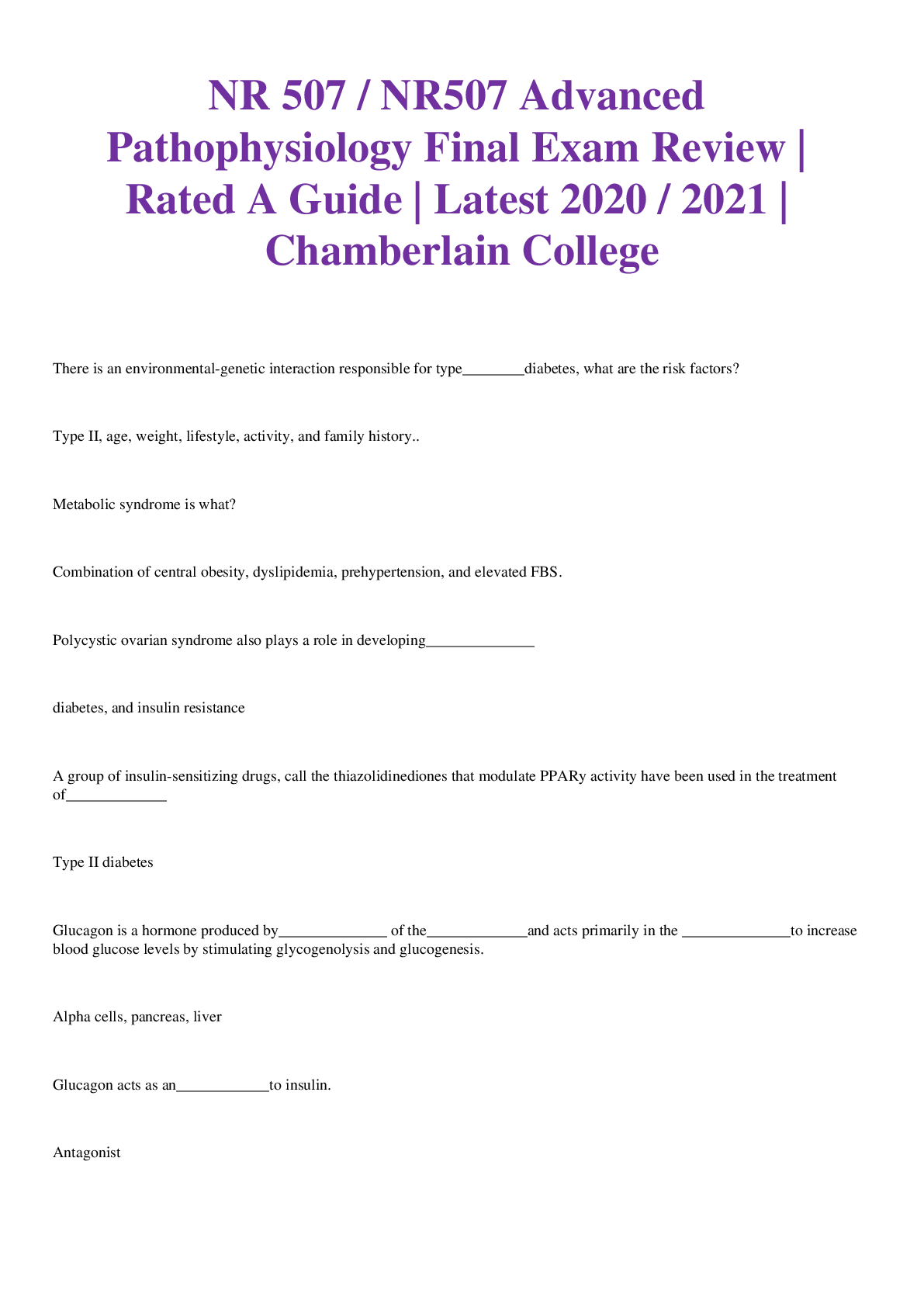
Reviews( 0 )
Document information
Connected school, study & course
About the document
Uploaded On
Dec 17, 2020
Number of pages
39
Written in
Additional information
This document has been written for:
Uploaded
Dec 17, 2020
Downloads
0
Views
84

